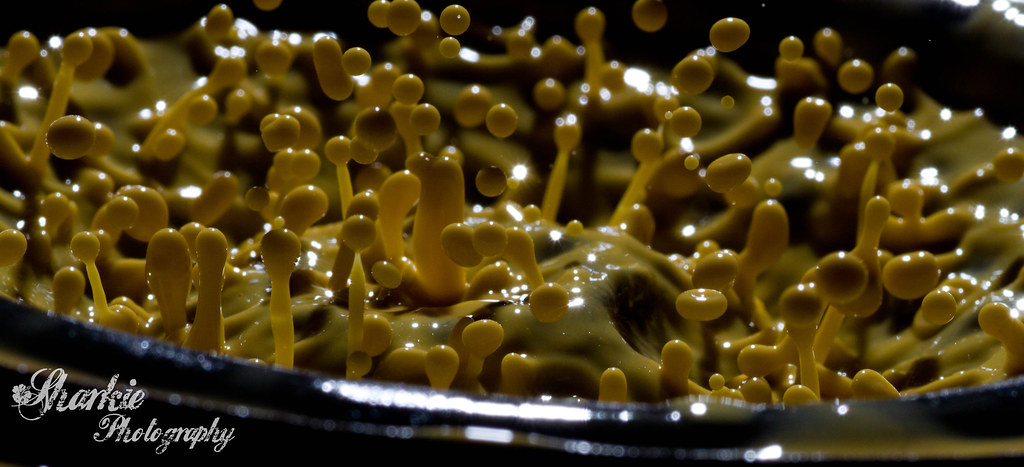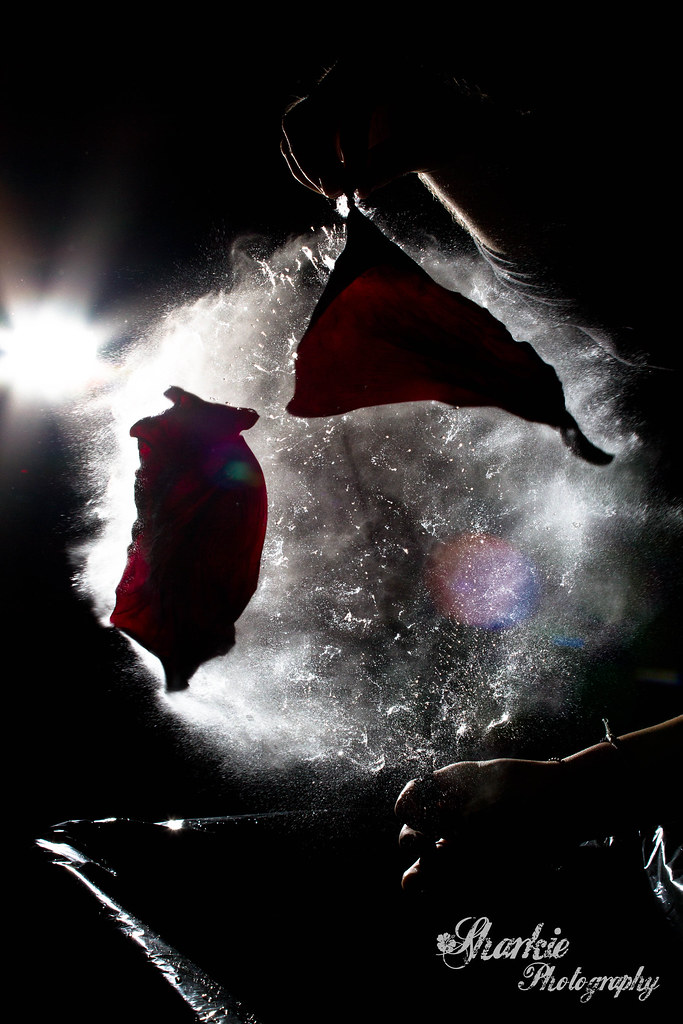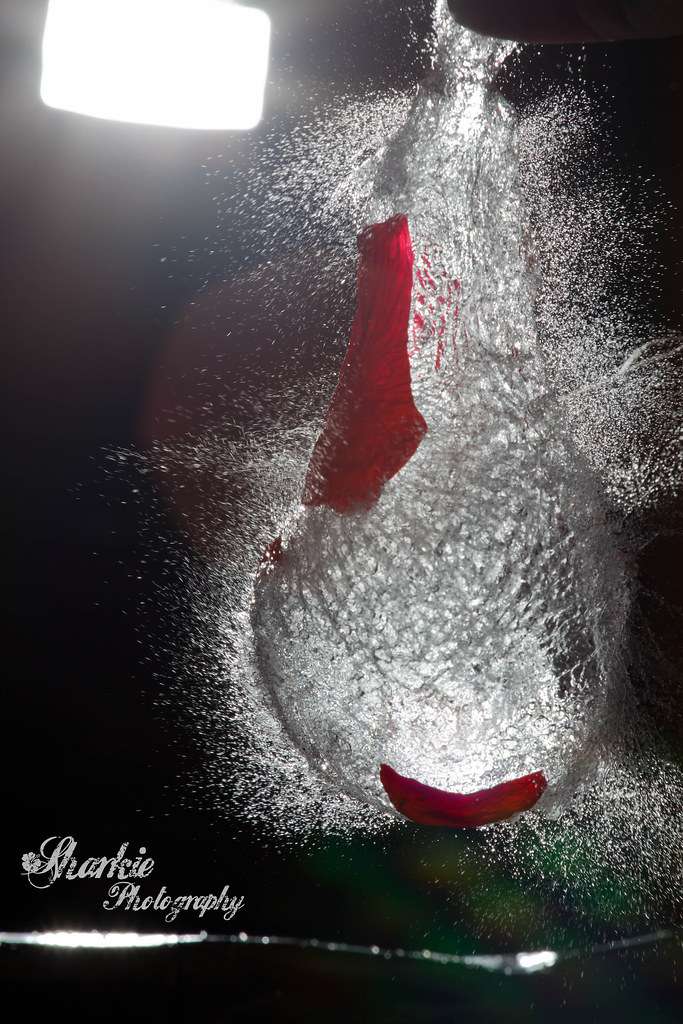And now I cant get Queen out of my head...
Flashes or speedlites can be fast, but how fast, and what's the point?
Canon EOS 7D
Tamron 90mm f/2.8 Macro
2/1, ISO 400, f/20
Fast enough. Welcome to the fast paced world of High Speed Photography.
More after the jump.
Have you ever seen an image of an event and thought to yourself, how did they capture that moment? Or how could you freeze something moving so fast? That's where high speed photography comes into play.
It all comes down to light.
Looking at the image above and the EXIF data included you might notice something odd. An exposure of 2 seconds? There's no way you could freeze cornstarch+water on a speaker with an exposure of 2s. And that would be correct. But with high speed photography the duration of the exposure doesn't really matter. That's because you're taking photographs in the dark.
Confused yet?
In order to get these images with motion frozen, high speed images are taken with the subject pre-focused, in a completely dark environment. In this situation we can leave the shutter open for any amount of time, and no image will be captured by the camera because no light actually reaches the sensor. In order to create an image we as the photographer must introduce light- and that's where speedlites come in.
Using a speedlite we can illuminate the scene to capture an image, and this is where the magic happens. Normally a camera body can only sync with a flash to a maximum of 1/250s (or in some lucky cases 1/400s), but this may not be fast enough to freeze action- in for instance, a balloon exploding.
Canon EOS 7D
Canon 70-200mm f/4L
1/1, ISO 400, f/13, 70mm
Fortunately, that's okay. By triggering a flash manually during a longer exposure in an environment lacking light you are effectively syncing the camera with the flash. But by also setting your flash at a lower power setting, like 1/128th for instance, you're doing something else your camera could never do. Because at a lower power setting the flash's light pulse is so small, and the pulse's trail is so short the actual time that the flash emits light that is registered by the camera lasts only about 1/41600th of a second.
That's an effective sync speed of one fourty-one thousand six-hundredth of a second! Compared to a normal sync speed of about 1/8000s.
That's fast!
So try it out yourself, and capture the moment.
Canon EOS 7D
Canon 70-200mm f/4L
2/1, ISO 400, f/13, 200mm
All the images in this post were captured during a University of Waterloo Photography Club meeting.
Balloons popping were captured using radiopopper wireless transmitters. The person popping the balloon would trigger the flash as they were popping the balloon.




No comments:
Post a Comment